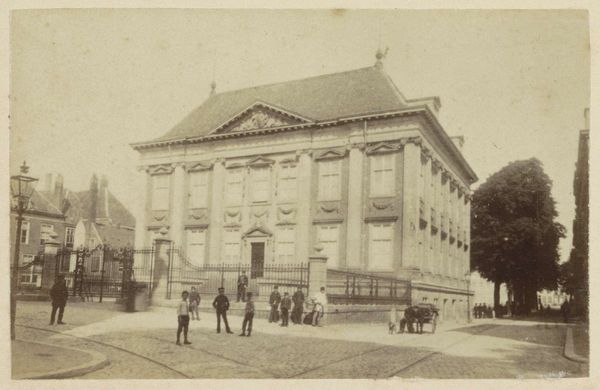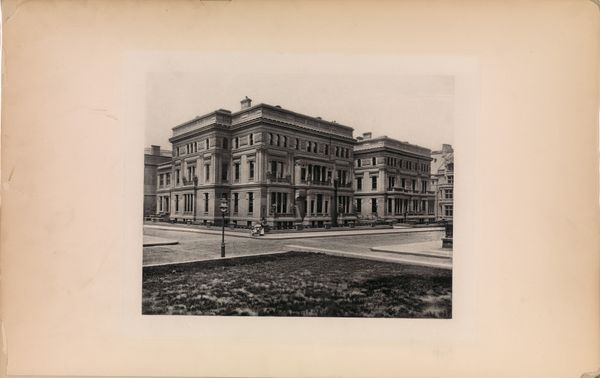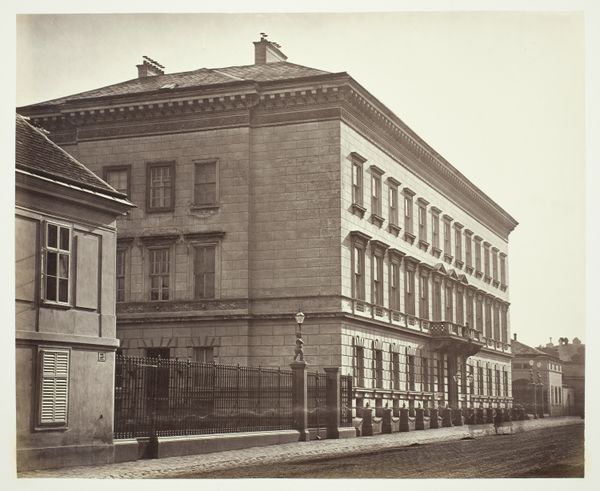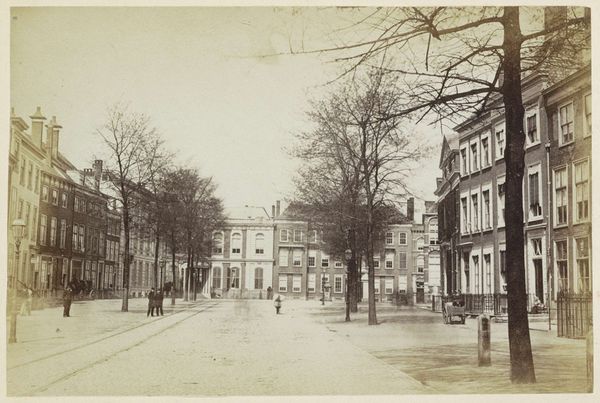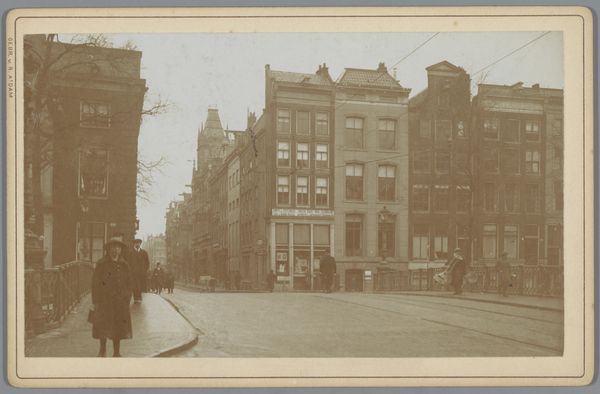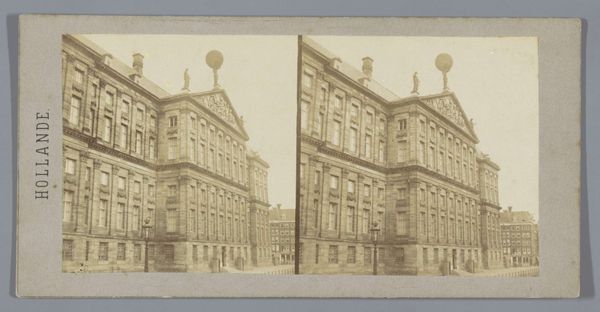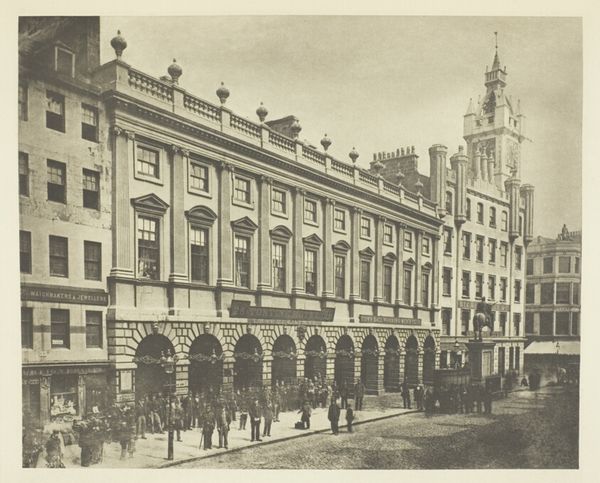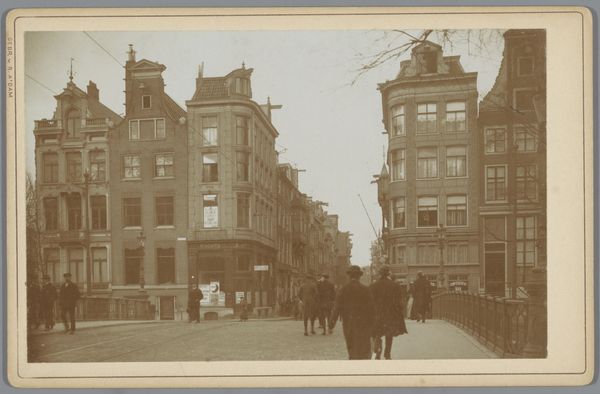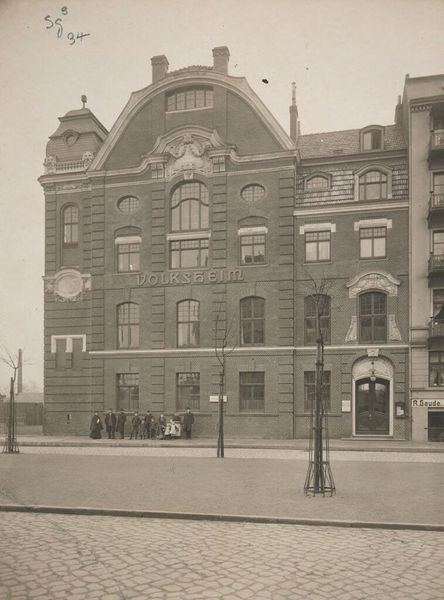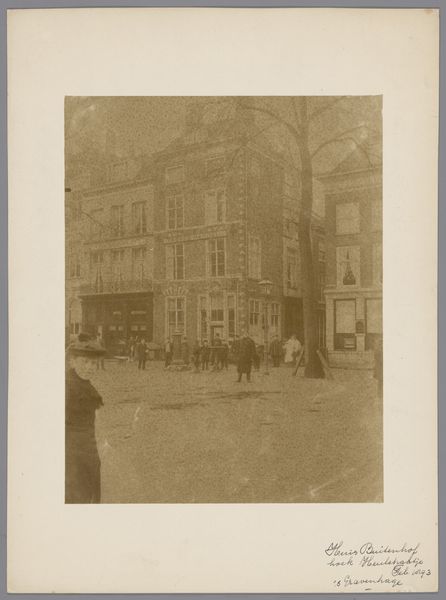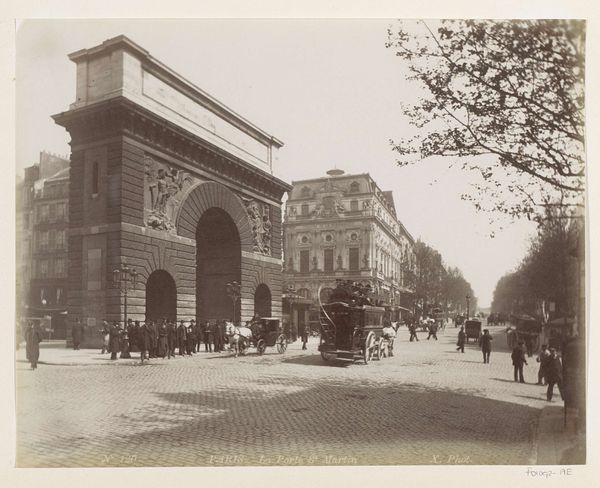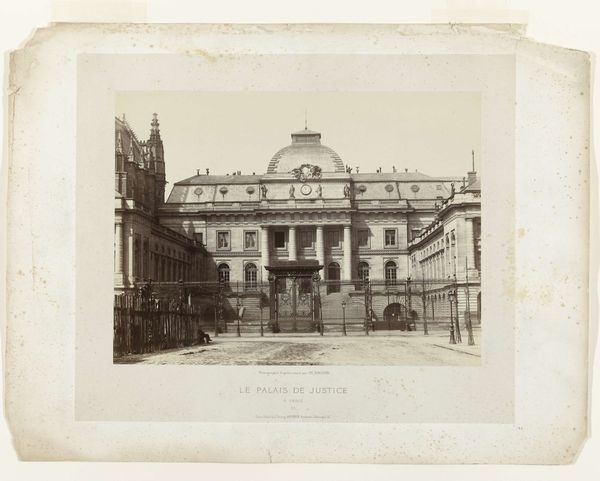
Achterzijde van het Paleis op de Dam in Amsterdam 1886 - 1910
0:00
0:00
Dimensions: height 318 mm, width 343 mm, height 472 mm, width 412 mm
Copyright: Rijks Museum: Open Domain
Curator: Here we have George Hendrik Breitner’s photograph, "Achterzijde van het Paleis op de Dam in Amsterdam," placing us behind the Royal Palace in Amsterdam sometime between 1886 and 1910. Breitner was known for capturing everyday life in Amsterdam, and this gelatin silver print is no exception. Editor: It’s undeniably somber. The grayscale and heavy composition create a sense of austerity, almost as if the city is holding its breath. You feel the weight of the Palace looming. Curator: Absolutely, and this image provides such a crucial visual record. Breitner’s photographs give insight into urban development and social change in Amsterdam at the end of the 19th century, during a period of significant shifts in Dutch society. Street photography documented a side of city life not typically portrayed in painting. Editor: Exactly. Think about who’s *not* in this picture. This is the rear of the Palace. There’s this back door feel—it's definitely not a celebration of royal power. The figures look rather common, their dark clothing fading in, without pomp and circumstance, the real seat of power is not really accessible for everyone, is it? Curator: That’s an interesting point. By photographing the back of the palace, Breitner arguably democratizes the image, shifting focus from official grandeur to a more workaday reality, a perspective also seen in his street scenes and depictions of working-class neighborhoods. It is really remarkable how the Palace is kind of relegated into a mere backdrop. Editor: He wasn’t afraid to present the truth of a city and that carries a sense of activism within it. It's not always beautiful and sanitized—it has these raw corners that make a city truly alive. Seeing historical images like these allows us to question our perception of our society: How do we frame our history? Who decides what is worth documenting and what isn’t? Curator: Breitner’s image encapsulates not just the architectural monument, but also captures social questions and presents a glimpse of life that official histories often ignore. Editor: Ultimately, these images confront the power dynamics present during that time. It shows that art has the power to become a tool for questioning.
Comments
No comments
Be the first to comment and join the conversation on the ultimate creative platform.

